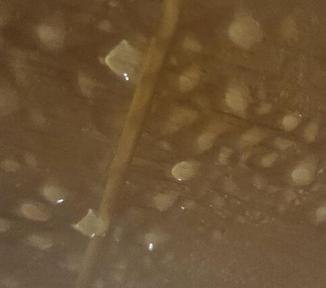Ceramic and Porcelain tile - Buyer beware
For those who are installing ceramic tiles I urge people to know what to expect and what to avoid. With ceramic tiles you have to adjust the cubic feet 30%. Many people get their cubic feet and add 30%. What many people don't take into consideration is the ceiling height. If someone has an 8 foot ceiling, there is always going to be a 12 inch steam trap and about 20% of the higher temperature heat and steam will be above your head. For those that have 9 foot ceilings, 40% will be above your head.
I urge people not to go up in size if they have a 8 foot or higher ceiling. This will make the steam trap even harder to bring down to the lower body level. Upsizing an extra size or two means more grams of steam are coming out at once faster than the steam is falling to the floor. If you keep the recommended killowatt size and you have a very high ceiling it will bring the steam quality from optimal to good. Basically, bringing the quality if it was at a 7 foot which is an A down to a B score. If upsizing the killowatt size now the quality becomes C (if 8 foot ceiling) or D (if a 9 foot ceiling). Anyone that uses a DC marine grade fan will tell you how the quality of steam in an 8 or 9 foot room becomes the quality as if it were a 7 foot high steam room.
Many people don't want to have to splash cold water on the upper walls and ceiling several times during their steam session just to prevent the steam trap and have a dense, thick steam. A fan will always work better than the cold water splash.
If someone has ceramic or porcelain tile in their steam room, the drier the steam coming out of the generator the better the steam experience will be. Generators that have 1/2 inch pipes will usually be wetter and sticker. Also, 1/2 inch pipes are much louder if getting a high killowatt size steam generator. Also, if using porous walls the require you to upsize it 30%, starting with the highest psi pressurized generator will always put out a steam with less condensate and less water hammer. The driest steam with the least condensate comes out of 20 psi generators and the 15 psi or lower have the most condensate and will usually be the muggiest and drippiest rooms. Also, the lower psi and steam that coms from pipes smaller than 3/4 inches will make the steam room prone to hard to lower steam traps.
With ceramic tile you have to upsize 30% (ceramic acts like a sponge). When the temperature of the tile meets the temperature of the room and it gets closer to 100% humidity, the steam starts sticking to the ceiling and walls. The best way to work with ceramic tile is to keep the walls and ceiling cooler by having the least condensate in the steam. If you can get a generator that uses only 1.5 gallons of water instead of 2.5 gallons of water in the same steam session, that extra gallon of condensate holds latent heat that heats up the walls quicker and that is why the steam cloud is not as dense and you have drippiness down the walls.
If using ceramic or porcelain tile, if too much steam comes out at once (fast burn), too much can rise and heat up the ceiling and walls too quick. A steady slow burn is better with ceramic. I prefer the atmospheric or the dual tank models that have the highest psi (these make the least condensate).
Also, if the steam generator is oversized, the steam can get caught in a steam trap, especially if the ceiling is over 7 feet tall. If someone has an 8 foot ceiling, this pushes the 110-114 degree thermocline up a foot and your body most likely will not be in that sweet spot comfort zone. Those with high ceilings and have ceramic often complain that it takes them 45 minutes and in the spa they used to go to it only took them 20 minutes to complete their steam session.
Using ceramic that wicks about 30% and having a glass door that wicks another 10% can make it tricky to choose a steam generator. If you have ceramic and a glass door and a high ceiling it can get tricker. If you have a generator that produces high condensate and puts out too much water then it becomes very tricky.
My best recommendation for those who have ceramic tile is to start with the driest steam you can get (least condensate). This can help so that the steam lingers in the air longer and doesn't stick to the walls, rise to the ceiling too fast, or even worse, drop to the floor quickly when the steam generator turns off during the duty cycle (with single tank pressurized models).
Notice: Customers with ceramic ceilings over 7 feet tall
I urge those who have taller ceilings with ceramic tile to avoid steam traps. At 8 foot heigh, about 20% of the heat and steam is going to be trapped at the ceiling. With ceramic, another 30% has to be adjusted. These 2 factors bring the steam trap up and the thermocline at the body level will most likely not be in the 110 114 comfort window. I strongly recommend having a Kona marine grade fan and suction cup it on the wall to blow the steam trap down. Also, having a hygrometer is also important so you have better control of the temperature and humidity at your body level, especially if you want whole body steam therapy, not just heating your upper body.
Know before buying a steam generator
Know before buying a steam generator
Know before buying a steam generator
DiscountSteamGenerators.com
We're open now
1-800-336-9285
Ask for Sharon
We're open now
1-800-336-9285
Ask for Alex
DiscountSteamGenerators.com
We're open now
1-800-336-9285
Ask for Sharon
We're open now
1-800-336-9285
Ask for Alex
Let me know on my sizing quiz if you are using ceramic or porcelain tiles.










